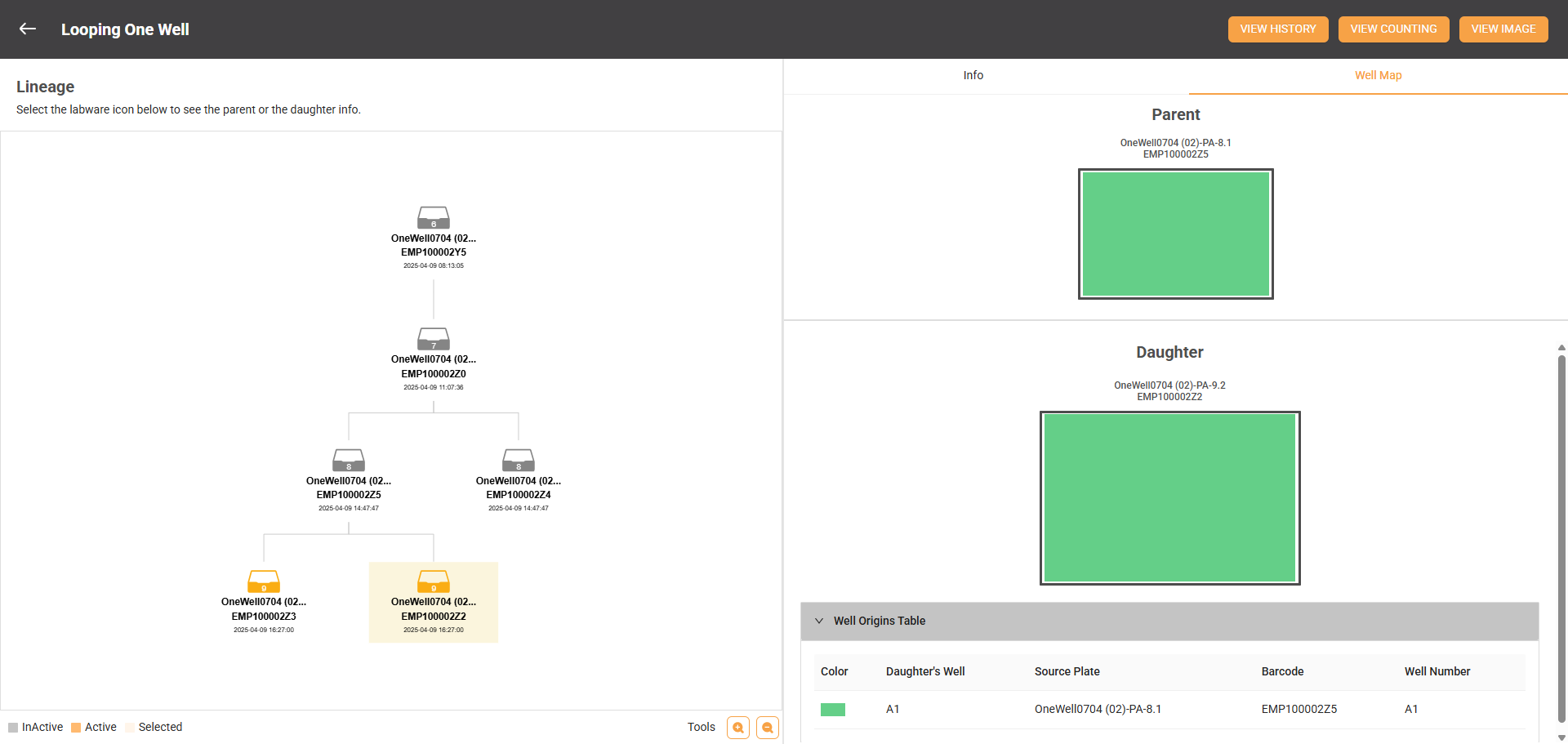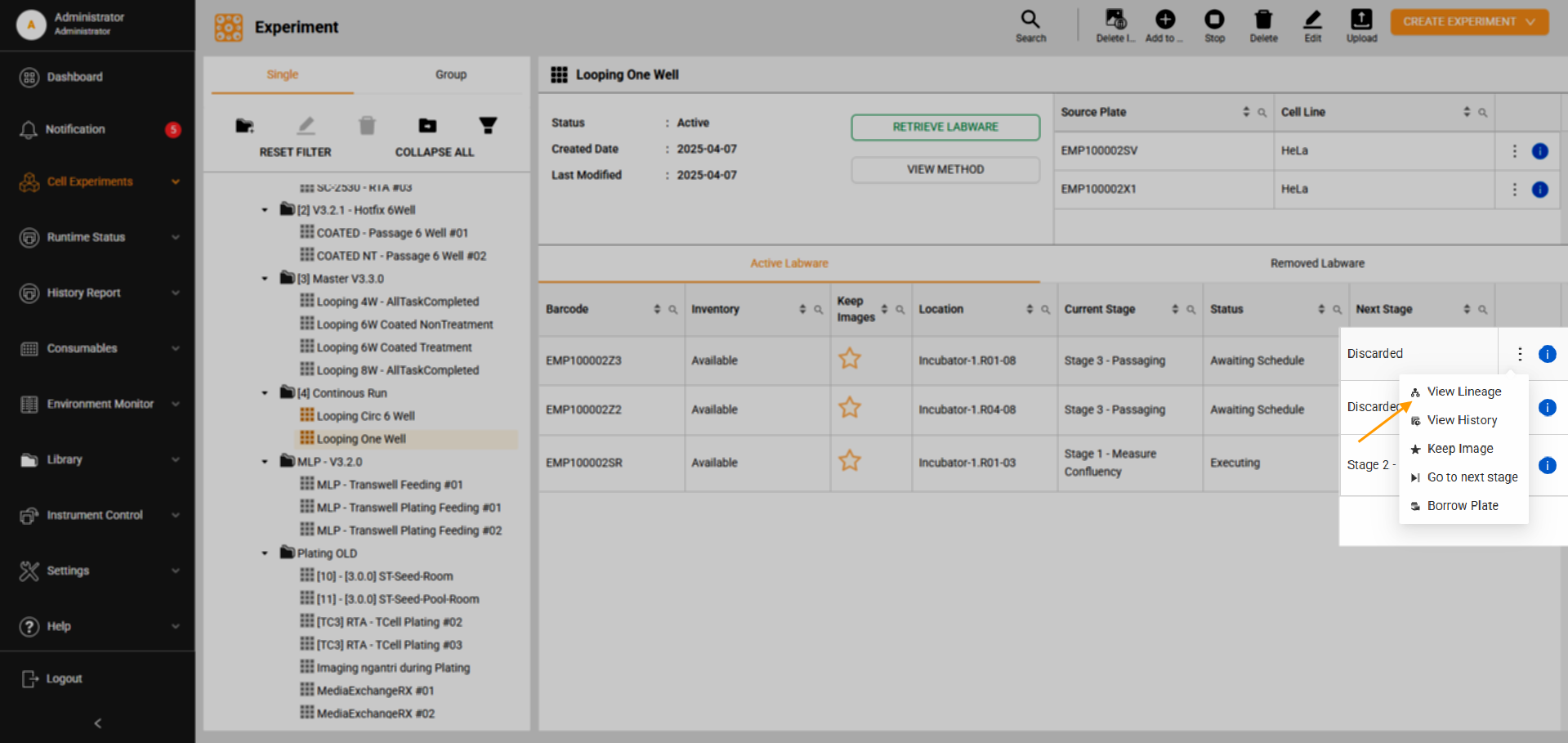View Lineage
The View Lineage page displays the cell family tree to illustrate the relationship between mother and daughter plates. In this view, the upper plates represent the mother plate, while the lower plates depict the daughter plates, each labeled with its generation number. Users can explore the complete family tree of an experiment by double-clicking on the mother or daughter plates in the Lineage column.
Plates are color-coded to indicate their status:
- Gray: Signifies inactive plates.
- Orange: Represents active plates.
- Soft orange: Highlights the selected plate.
When a plate is selected, the Info tab on the right column displays detailed information about labware and cell handling. Next to it, the Well Map tab uses different colors to help trace the origin of cells in the daughter plates. It is worth noting that these colors do not denote different cell types, and this map applies only to the daughter plates, as the first-generation or initial mother plates do not have a Well Map. The Well Map tab includes a table explaining the color coding, with each row corresponding to the source well for each colored well in the daughter plates. This table helps users understand the specific origins of cells in each well within the lineage.
Additionally, the View Lineage page features three buttons in the top right corner that are associated with the selected plate:
- View History: A page to record all activities of a plate.
- View Counting: A page to see the cell counting results.
- View Image: A page to view the cell culture's performance over time.
To check the lineage info:
FORMULATRIX® is proudly powered by WordPress

